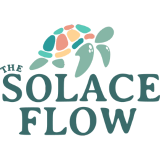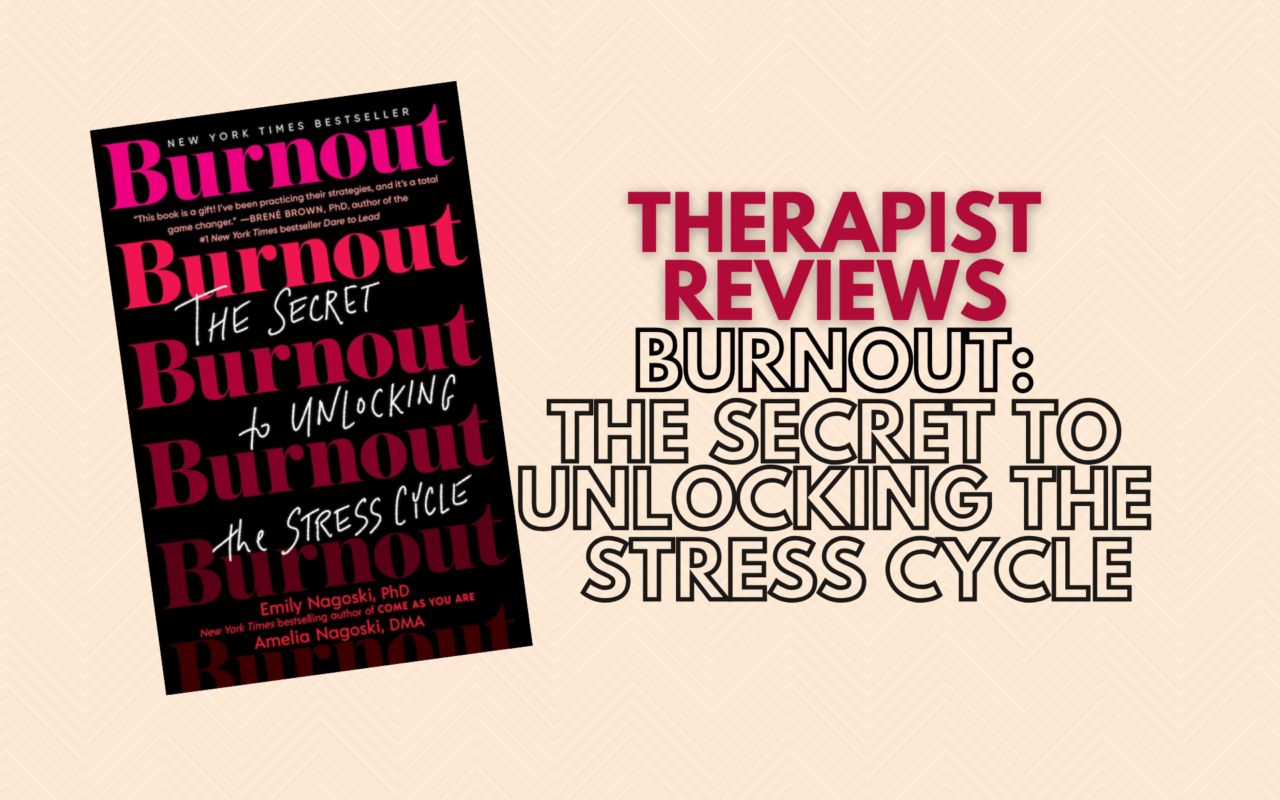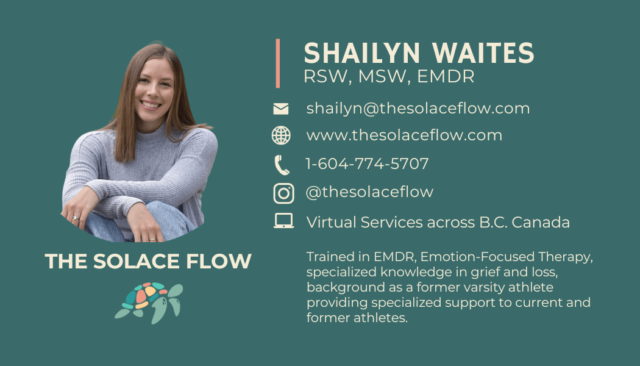A Therapist’s Perspective on “Burnout: The Secret of Unlocking the Stress Cycle”
Greetings, wonderful readers! Shailyn Waites here, excited to reconnect for our blog post. Today, I’m excited to share my thoughts on a book that has been a game-changer in my practice and personal understanding of stress – “Burnout: The Secret of Unlocking the Stress Cycle” by Emily Nagoski. As a therapist, I’m constantly seeking resources to enhance my knowledge and support my clients, and this book has proven to be a valuable addition.
In today’s fast-paced world, burnout has become a prevalent issue affecting individuals across various professions and lifestyles. The concept of burnout isn’t just feeling tired or stressed; it’s a state of emotional, physical, and mental exhaustion caused by prolonged stress. Recognizing the signs of burnout and understanding how to address it is crucial for maintaining overall well-being. In this post, we’ll explore the key insights from the book “Burnout: Unlocking the Stress Cycle” by Emily Nagoski, Ph.D., and Amelia Nagoski, DMA.
What is Burnout?
Burnout isn’t just about being overworked; it’s a result of chronic stress that isn’t adequately addressed. It’s characterized by feelings of cynicism, detachment from work or personal life, and a sense of ineffectiveness and lack of accomplishment. While stress is a natural response to demanding situations, burnout occurs when stress becomes chronic and overwhelming, leading to emotional exhaustion and reduced performance.
The Stress Cycle
The authors emphasize the importance of understanding the stress cycle to effectively combat burnout. Stress triggers physiological responses in the body, such as increased heart rate and cortisol levels. These responses are essential for dealing with immediate threats, but they need to be completed to prevent them from becoming chronic. However, in today’s society, many people struggle to complete the stress cycle due to ongoing stressors and lack of adequate coping mechanisms.
Completing the Stress Cycle
To combat burnout, it’s essential to find ways to complete the stress cycle. This involves engaging in activities that allow the body to process and release accumulated stress. Exercise, deep breathing, mindfulness practices, and engaging in hobbies are effective ways to complete the stress cycle and promote relaxation. Additionally, building a strong support network and setting boundaries in both personal and professional life can help prevent burnout.
Unpacking Burnout:
Acknowledging the Reality:
One of the book’s strengths is Nagoski’s emphasis on acknowledging the reality of stress and burnout. Nagoski’s approach to stress is refreshingly realistic. Rather than viewing stress as a problem to be get rid of, she encourages readers to acknowledge its inevitability. By normalizing stress, she creates a foundation for healthier coping strategies.
Completing the Stress Cycle:
Nagoski introduces the concept of completing the stress cycle, stressing the importance of recognizing and addressing the physical, emotional, and psychological aspects of stress. This holistic approach aligns very well with therapeutic practices and has been a game-changer for both my clients and me.
“Completing the Stress Cycle” refers to the process of allowing the body and mind to fully process and release built-up stress, moving from a state of heightened tension to a state of relaxation. In other words, it’s about consciously addressing the physiological and psychological responses triggered by stressors, to turn towards a balanced and calm state.
Here’s a deeper exploration of what it means to complete the stress cycle:
- Recognition of Stress: Acknowledging and recognizing stress is the initial step in completing the stress cycle. This involves understanding the various stressors in one’s life, whether they be physical, emotional, or mental.
- Physical Expression: Stress often manifests physically, activating the body’s fight-or-flight response. Completing the stress cycle involves engaging in physical activities that help discharge this energy, such as exercise, deep breathing, or progressive muscle relaxation.
- Emotional Processing: Emotions play a significant role in the stress cycle. It’s crucial to allow oneself to fully experience and express emotions related to stress, whether through talking with someone, journaling, or engaging in creative outlets.
- Mindful Awareness: Mindfulness practices, such as meditation or mindfulness-based stress reduction, can aid in bringing awareness to the present moment. This helps individuals observe their thoughts and feelings without judgment, fostering a sense of calm and detachment from stressors.
- Connection and Support: Social connections are very significant to completing the stress cycle. Engaging in meaningful conversations, seeking support from friends, family, or a therapist, and sharing experiences contribute to emotional release and a sense of connection.
- Self-Care Rituals: Implementing self-care rituals is an essential aspect of completing the stress cycle. Engaging in activities that bring joy, relaxation, and comfort, whether it’s reading, taking a bath, or spending time in nature, helps the mind and body.
- Positive Reinforcement: Celebrating small victories and acknowledging personal achievements, no matter how minor, contributes to positive reinforcement. This counters the negative impact of stress by promoting a sense of accomplishment and self-worth.
- Reflecting on Resilience: Reflection on one’s resilience and ability to overcome challenges is a crucial part of completing the stress cycle. Recognizing one’s capacity to adapt and bounce back from stressors reinforces a positive mindset.
In essence, completing the stress cycle involves a combination of physical, emotional, and mental strategies that together contribute to a sense of well-being. By actively engaging in these practices, individuals can break free from the cycle of chronic stress and move towards a healthier, more balanced life. Each of these areas are described in more depth in her book!
Key Takeaways:
- Understanding Stress in Real Terms: Nagoski breaks down stress in relatable terms, making it accessible for readers seeking to understand and manage their stressors more effectively.
- Practical Strategies for Therapists: Therapists will find the book rich with applicable strategies to incorporate into their practice, enhancing the support they offer to clients dealing with burnout.
- A Holistic Approach to Well-Being: Nagoski’s holistic approach aligns with therapeutic principles, emphasizing the interconnectedness of physical and mental well-being.
Truly, “Burnout” by Emily Nagoski is a must-read for anyone navigating stress and burnout, and especially for fellow therapists seeking evidence-based insights to enrich their practice. The book’s blend of science, empathy, and actionable strategies makes it a valuable resource in my therapeutic toolkit.
As you embark on your journey to understanding and overcoming burnout, may you find solace and empowerment in the wisdom shared by Emily Nagoski.
If you are located in British Columbia or Ontario Canada and want to pursue counselling and feel I am a good fit, click here to BOOK NOW: thesolaceflow.janeapp.com/


